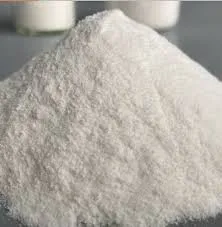
Dec . 05, 2024 06:31 Back to list
HPMC 2000000 Applications and Benefits in Various Industries
Understanding HPMC 200000 A Comprehensive Overview
Hydroxypropyl Methylcellulose (HPMC) is a versatile cellulose derivative extensively used in various industries, including pharmaceuticals, food, cosmetics, and construction. Among its various grades, HPMC 200000 stands out for its unique properties and applications. This article will focus on the characteristics, benefits, and uses of HPMC 200000, shedding light on why it is an important compound in modern industries.
What is HPMC 200000?
HPMC 200000 refers to a specific grade of Hydroxypropyl Methylcellulose characterized by its high viscosity and molecular weight. The number 200000 signifies its viscosity in a 2% aqueous solution at 20°C, which is approximately 200,000 centipoises (cP). This high viscosity makes it particularly useful in formulations where thickening and stabilizing agents are required.
Characteristics of HPMC 200000
1. High Viscosity One of the primary features of HPMC 200000 is its ability to create a thick, gel-like consistency in aqueous solutions. This quality is essential for applications like thickening sauces, gels, and creams.
2. Thermal Stability HPMC 200000 remains stable under a broad range of temperatures, which makes it suitable for various manufacturing processes, including those that involve high heat.
3. pH Neutrality Being non-ionic, HPMC does not react with acids or bases, making it an excellent choice for formulations that require stability across different pH levels.
4. Biocompatibility Especially important in the pharmaceutical and cosmetic industries, HPMC is regarded as safe and biocompatible, making it suitable for use in products that come into contact with skin or are ingested.
hpmc 200000

Applications of HPMC 200000
1. Pharmaceuticals HPMC 200000 is commonly used as a binder and thickener in drug formulations. It aids in controlling the release of active pharmaceutical ingredients (APIs) in various dosage forms, including tablets and capsules. Its viscosity helps to sustain the release of the drug, enhancing bioavailability and therapeutic effects.
2. Food Industry In the food sector, HPMC 200000 serves as a thickening agent and stabilizer for sauces, dressings, and other food products. Its ability to improve texture while maintaining a clean label (since it is a plant-derived ingredient) makes it appealing to consumers and manufacturers alike.
3. Cosmetics The cosmetic industry utilizes HPMC 200000 in creams, lotions, and gels. Its thickening properties contribute to the desired consistency of products while providing a smooth application.
4. Construction HPMC 200000 is also employed in the formulation of mortars and adhesives. It enhances workability and extends the open time, allowing for better application in construction projects.
5. Personal Care Products Due to its versatility, HPMC 200000 finds use in various personal care products, including shampoos and conditioners, where it helps achieve consistency and improve overall product performance.
Conclusion
HPMC 200000 is a crucial ingredient across several industries due to its unique properties and functionality. Its high viscosity, stability, and biocompatibility make it a preferred choice for pharmaceuticals, food products, cosmetics, and construction materials. As industries continue to evolve and innovate, the demand for versatile and effective compounds like HPMC 200000 is expected to grow. Understanding its applications and benefits can help manufacturers create improved products that meet consumer needs while adhering to safety and quality standards. Through continuous research and development, HPMC 200000 will likely remain an essential component in the formulation of various products, signifying its importance in the modern industrial landscape.
-
Versatile Hpmc Uses in Different Industries
NewsJun.19,2025
-
Redispersible Powder's Role in Enhancing Durability of Construction Products
NewsJun.19,2025
-
Hydroxyethyl Cellulose Applications Driving Green Industrial Processes
NewsJun.19,2025
-
Exploring Different Redispersible Polymer Powder
NewsJun.19,2025
-
Choosing the Right Mortar Bonding Agent
NewsJun.19,2025
-
Applications and Significance of China Hpmc in Modern Industries
NewsJun.19,2025







